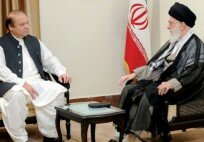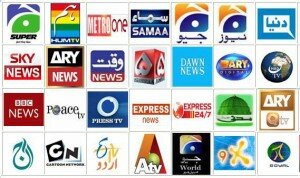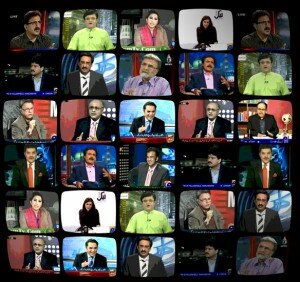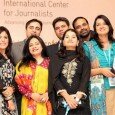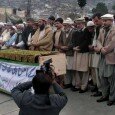By Yasir Habib Khan –
Under extra ordinary circumstances media should adopt self-restraints
Being in state of war against terrorism when nation demands national unity, government and media are on warpath straightening the guns against each other on formulation of wartime media code of conduct to cover terror incidents.
Government wants to lay down official guidelines or standard operative procedures (SOPs) to run the gamut of terror news to minimize psycho-social effects and foil ulterior designs of armed militia highly active in the country. In contrast, media bodies lack trust on administration voicing that nobody but they have right by themselves to frame media parameters independently. They brand state’s intrusion as a step toward media curbs and vow to champion freedom of expression come what may.
The infighting between two pillars of state came on the heels of carving out 20-point boisterous agenda of National Action Plan steered by Prime Minister Nawaz Sharif and consecutive meetings of National Assembly Standing Committee on Information, Broadcasting and National Heritage. Members of the Pakistan Broadcasters’ Association, All Pakistan Newspapers Society, Council of Pakistan Newspaper Editors, as well as notable media specialists joined the meetings.
Clash of titans is something enemies of nation desperately look for and it augurs ill that what they desire both behave accordingly. Truly speaking with great power comes great responsibility and media being a big power, unfortunately, has yet to outline its own media ethics keeping in view new trends and dynamism. The delay has let government to intervene to offset the dent.
Senior columnist and group editor of giant media house Nazir Nazi came hard on media lethargy believing that media organizations had to be on same page very early to define their own code of conduct and ethics and since they dragged their heels, government being a stakeholder had to come forward to do the job. “Around 90 percent media practitioners, journalists’ bodies and groups are oblivious of even basic meaning of freedom. Their commercial benefits had blinded them and they often focus on how to cash in situation even violence trauma and how to jack up rating. They hardly care for ethics and never realized what is exposed to viewers will how much impact the society,” he added. He prophesied that government’s media code of conduct was on the way and media people would have to bear the brunt of their belated inaction.
After Peshawar massacre that claimed more than 140 students of army public school and media rampage to cover terrible scenes, National Action Plan (NAP) constituted 15 committees to deal with wartime proposals including media code of conduct.
An umbrella committee, spearheaded by the Prime Minister will monitor execution of plan. Neither print nor electronic media will be allowed to project terrorist organizations and their views. Information Minister Pervaiz Rashid will head the media committee and will prepare recommendations on putting embargo on the glorification of terrorism and terrorist organisations through print and electronic media.
Meanwhile, National Assembly Standing Committee on Information, Broadcasting and National Heritage in chair with Marvi Memon furnished 46 recommendations on media code of conduct and ethics to strategize media behavior to in war against terror.
Theme of proposed recommendations revolves around 4 points. First is to formulate media code of conduct, endorsed both the regulator and broadcasters in term of live footage, horrible scenes, and security matters. Second is the onus on broadcasters to put forth names of members of the editorial boards of the respective channels to PEMRA with letting inspection of the channels’ delay mechanism. Third is to reach an agreeable exact and specific definition of “glorification” of terror acts to undo ambiguity for broadcasters. Forth is that implementation of section 123 of Pakistan Penal Code and section 27 of the PEMRA Ordinance 2002 to restrict airtime and space for extremism and terrorism in both electronic and print media.
Federal Information Minister Pervaiz Rashid said the government ensured freedom of expression at all costs and envisaged media as its partner in development. “Media code of conduct will be rational taking cognizance of every aspect especially valid considerations of all stakeholders. In view of the fast growth in media industry, it is highly mandatory that all media stakeholder along with the regulator put their head together to devise a viable code of conduct along with an effective implementation mechanism,” he said.
However, Council of Pakistan Newspaper Editors (CPNE) president Mujeeb-ur-Rehman Shami objected the idea of banning terror groups from media coverage. He said that the legal point of view might be one way, but practically, things were other way round. “It should be understood that without media coverage, nobody could know what is taking place in the rest of the country,” he said.
South Asia Free Media Association (SAFMA) secretary general Imtiaz Alam said that PEMRA was black law influenced by those who have nothing to do with media. Media stakeholders better know what and how to evolve media code of conduct. Media entities, he said, agreed that terrorists should not be let appearing online without impairing people right to know, violent scenes should be filtered and terror incident coverage should be done under professional rules of ethics. Terming Pemra as monkey house, he held a view that media had no faith on it and thus would take appropriate measures by its own. “If journalists right are guaranteed to have access to information through enacting Right to Information (RTI )law instantly, we may ready to follow the course,” he remarked.
Media has emerged as great influencer to transform society. During Musharraf era, it expanded overwhelmingly. According to a Gallup Pakistan survey 79 percent people consider TV as vital source of information. Today, Pakistan boasts more than 90 privately-run television channels. Of them, 35 are news channels. Around 12% Pakistanis newspapers are the most important source of information, followed by 5% radio and 3% journals. According to the All-Pakistan Newspapers Society (APNS), Pakistan today has 246 big and small Urdu dailies, 53 English dailies, 63 monthly magazines (English, Urdu, Sindhi and Balochi), 17 weeklies, and three fortnightlies. Other media entities include Media entities include APNS, CPNE, PFUJ, Press Clubs, Pakistan Press Foundation, Pakistan Coalition on Ethical Journalism (PCEJ).
Since the birth of Pakistan, there are some legislative and regulatory systems that directly and indirectly impact the media. First media regulation came after Press and Publication Ordinance (PPO) passed during Ayub regime. Then Printing Presses and Publications Ordinance 1988, the Freedom of Information Ordinance of 2002, the Pakistan Electronic Media Regulatory Authority (PEMRA) of 2002, the Defamation Ordinance of 2002, the Contempt of Court Ordinance of 2003, the Press, Newspapers, News Agencies and Books Registration Ordinance 2003, the Press Council Ordinance 2002, the Intellectual Property Organisation of Pakistan Ordinance 2005 and lastly the Access to Information Ordinance of 2006.
It is pity all the time government made the regulations but media as whole did not bother to formulate their own code of conduct to serve better.
After government announced to hang all death row convicts, media got flooded with information revealing sensitive data that led to security problems in all jails. With security threats to schools, breaking news to close down schools went on air in a flash that served terrorist’s sole purpose to trigger terror. During the course of reporting of the 16/12 Peshawar carnage, media people tried to sensationalize the traumatic scenes forcing the victim’s family members to talk on camera in the race of higher rating. When terrorists claim the responsibility of terror attack, it is broadcast repeatedly showing the image of spokesperson of terrorist outfits like TTP.
Media ethics experts Dr Mahdi Hasan and Dr Mujahid Mansoori and S.M Zaffar were of the views that media had a great role of gatekeepers and under new circumstances, this role should be revived. Best way to deal the situation, reporters, broadcasters, reporters, anchors and new room staff media are in need to be sensitized with hands-on training. Media may behave more responsible if frequent interactions among media managers and content controllers were ensured, they added.
While addressing a media conference on terrorism Jamaat-e-Islami chief Sirajul Haq proposed two-pronged policy to fight terrorism quoting a British friend. Policy includes educating all and giving zero media coverage to terror incidents. He said that 50 per cent terrorism checked by discouraging media coverage of such happenings.
Known media analyst and security expert Hassan Askari said that media did not need any new law as already available were sufficient to do the job. However there was need for improvement under new circumstances, he added. He said that media had shown its activism already by keeping offline the coverage of scattered limbs, dead bodies and pool of bloods at the scenes of terror incidents. He recommended media houses to put new code of conduct in motion by themselves. He said that government had already made general law and it is responsibility of media people to impose self-restraints through forming media code of conduct. Repeated terror attack coverage, terrorists’ responsibilities and image should be discouraged, he concluded.





























































